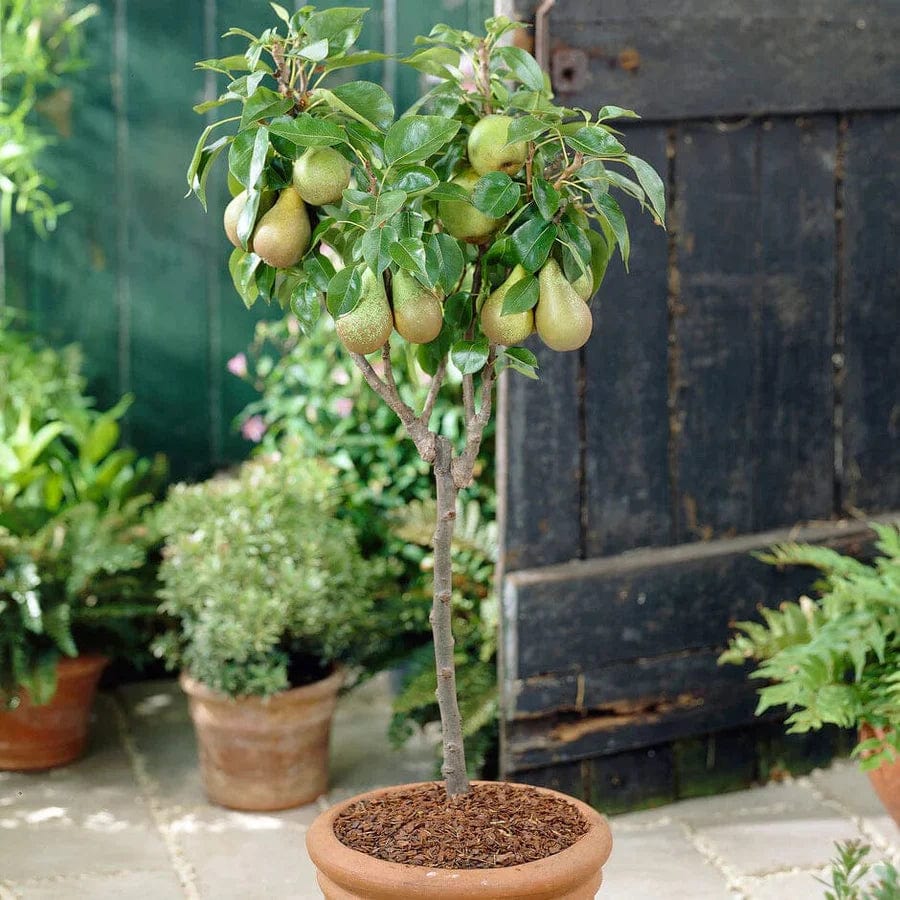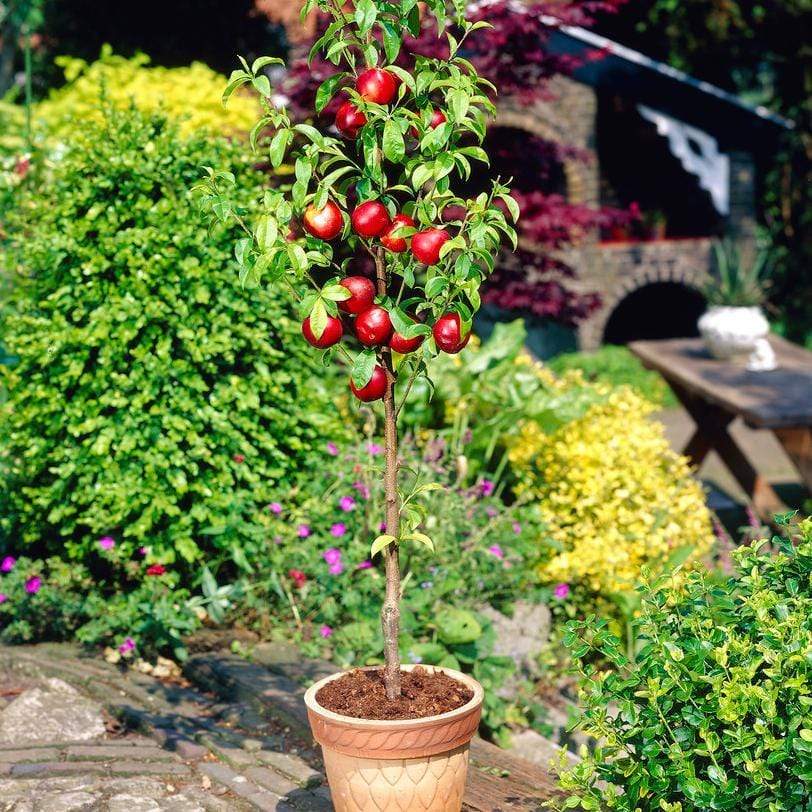Patio and Dwarf Fruit Trees
It's easy to grow fruit trees on a patio, in a yard or on a balcony, thanks to these specially grown compact dwarf varieties. They're perfect for smaller gardens and produce surprisingly large crops - many can also be grown in pots!
Need help picking?Sort and filter
South Downs National Park
Meet Danielle
110 years' expertise free with every tree
Danielle's nursery has been growing trees in the South Downs National Park for over a century, and it shows. Dug up and sent straight to your garden at between 18-36 months old, their quality rootstocks, expert pruning and natural pest control mean that these traditionally field-grown trees are the hardiest you can get.
Need help picking?
Patio Fruit Trees FAQs
What are patio fruit trees?
Patio fruit trees are fruit trees typically grown on a dwarfing (or semi-dwarfing) rootstock that only reach a relatively short ultimate height and spread. This makes them ideal for container growing on balconies and – as the name would suggest – patios.
How large do patio fruit trees grow?
With the appropriate rootstock and a light annual prune, patio fruit trees can easily be restricted to between just one to two metres in height, making them the perfect, compact solution for space-limited gardens.
How much sunlight do patio fruit trees need?
Patio fruit trees have the same sunlight requirements as their larger counterparts, which, for most fruits at least, is somewhere with full sun (at least six hours of direct sunlight per day). If you don’t have a sunny spot, then acid cherries, pears and certain plum varieties are your best bet.
What kind of soil is best for patio fruit trees?
Container-grown trees grow best in a loam-based compost, rather than using garden soil. Why? Garden soil can easily become compacted and dense when used in a container, reducing aeration and thereby the level of oxygen available to your tree. Something like John Innes No.3 works brilliantly for patio fruit trees.
How often should I water patio fruit trees?
Plants grown in pots have greater watering needs than those plants grown in the open ground, and patio fruit trees are no exception. Regular watering throughout the growing season is important to make sure your fruit tree’s compost doesn’t dry out. A good rule of thumb is to allow the surface layer of compost to dry somewhat (but not completely) before you water your tree again. In particularly hot, dry summers, this might mean daily watering is needed.
Do patio fruit trees need fertiliser?
Do patio fruit trees need fertiliser? Unlike fruit trees grown in the open ground, which have ready access to a larger supply of nutrients, container-grown fruit trees can benefit from a bit of a boost in the feeding department, given the comparatively limited quantity of nutrients available to them (even with a high-quality, loam-based compost). With that in mind, you can either give it a granular feed with general-purpose fertiliser in spring, or a fortnightly liquid feed throughout the growing season (using something like tomato feed).
How long does it take for patio fruit trees to produce fruit?
Because they’re normally grown on dwarfing or semi-dwarfing rootstocks, which typically bear fruit faster than more vigorous rootstocks, you can expect your patio fruit tree to produce fruit a bit quicker than its bigger, ground-grown counterparts. It’s not unusual to see fruit from your tree within two or three years of planting.
Do you prune patio fruit trees?
Patio fruit trees require minimal pruning, just an annual ‘touch-up’ to remove any damaged, diseased or congested branches, and to keep its shape as desired. This is best done between late autumn and early spring. Check out our article on growing fruit trees in pots for more information.
Can patio fruit trees survive the winter?
Certain hardier patio fruit trees (like apples and pears) will survive being kept outside in winter, but will still appreciate a sheltered spot. Less hardy fruits, by contrast, like citrus trees, will need to be brought inside over winter and placed somewhere dry and sunlit to protect them from frosts and prolonged wet weather.
How large should the container be for a patio fruit tree?
Generally, a 50cm diameter container will be sufficient for your patio fruit tree. You can use a pot made from terracotta or plastic, whichever you’d prefer, just make sure to add some crocks (broken pieces of pottery) at the base of the container to improve drainage.
Do I need more than one patio fruit tree for pollination?
It depends. If you have a self-sterile variety and live in the middle of nowhere, then you might need a pollination partner for your patio fruit tree to bear fruit. If you’ve chosen a self-fertile variety of fruit, or live in a built-up area, then you’re unlikely to need a pollination partner in order to bear fruit (even if your tree isn’t self-fertile, there’s likely to be a suitable tree close enough in urban areas to pollinate your tree).
How often do I need to repot my patio fruit tree?
You should repot your patio fruit tree every two or three years. The new pot doesn’t need to be much bigger, just large enough to give any roots that have become pot bound more space to breathe. You don’t even necessarily have to get a bigger pot, you can just give your tree’s roots a prune, removing roughly a third of the root mass.








